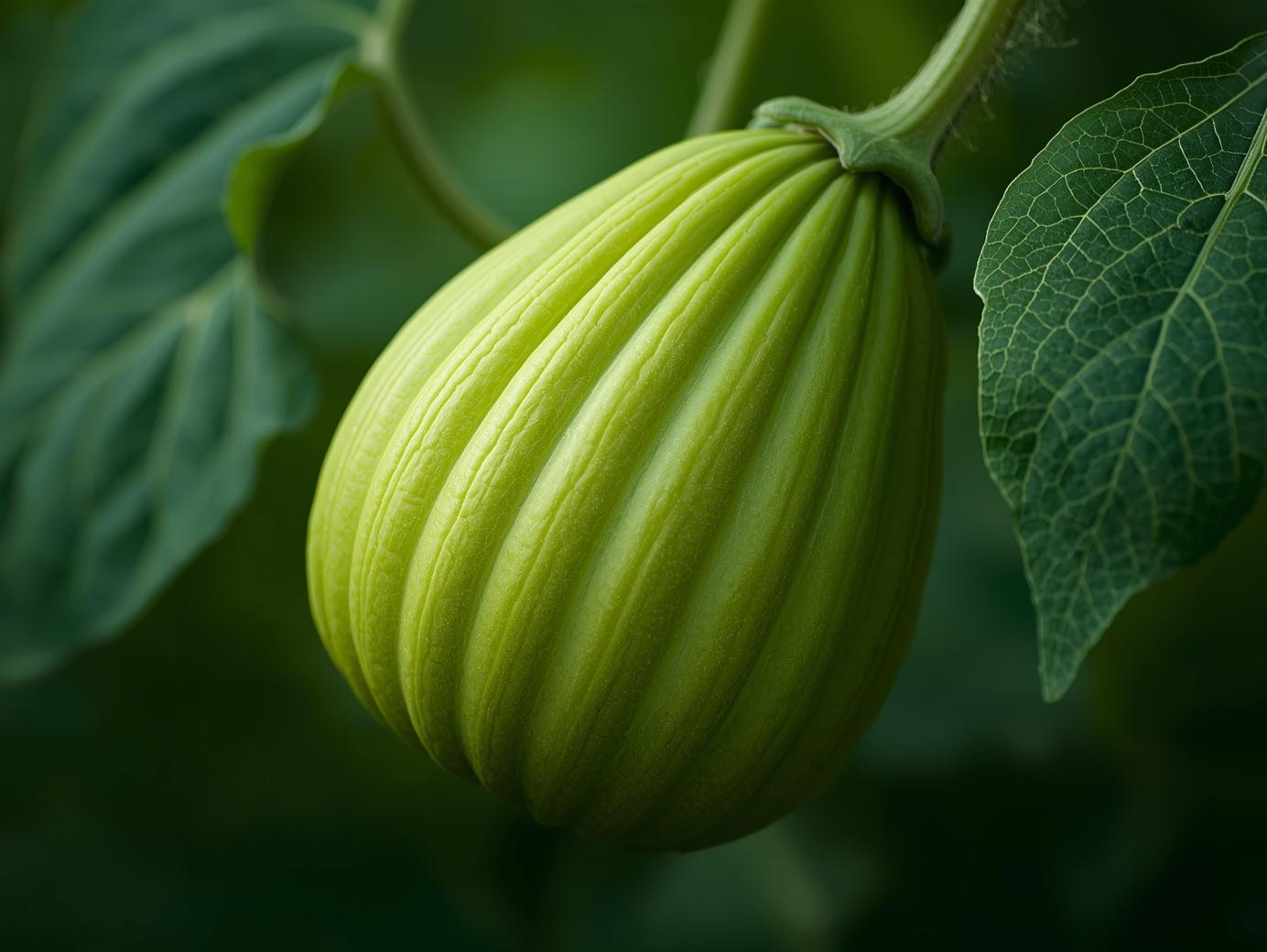Site Preparation
Preparing the right site is the first and most important step when growing ridge gourd in your courtyard. This tropical vine thrives in warm, sunny locations with good air circulation. Choose a site that receives at least six to eight hours of direct sunlight each day, as sunlight helps promote strong vine growth and abundant flowering. In the USA, ridge gourd grows best during the late spring and summer months, when temperatures stay consistently above 65°F.
Before planting, clear the area of weeds, stones, and any previous crop residues. Ridge gourd plants have deep roots, so loosen the soil to a depth of about 12 to 15 inches. Adding a layer of organic compost or well-rotted manure improves soil structure and enhances fertility. Setting up trellises or vertical supports before planting is beneficial, as these fast-growing vines need strong structures to climb. Proper site preparation ensures that your plants establish quickly and produce healthy, vigorous vines.
Soil Selection
Selecting the right soil type is crucial for successful ridge gourd cultivation. The plant prefers well-drained, fertile, sandy loam soil that is rich in organic matter. Soils that retain too much water can cause root rot, while overly sandy soils may dry out too quickly. The ideal soil pH for ridge gourd ranges between 6.0 and 7.5, slightly acidic to neutral. Conducting a soil test before planting helps determine nutrient levels and allows for necessary amendments.
Mixing compost or leaf mold into the soil enhances its moisture retention while maintaining good drainage. Courtyard gardeners in the USA can use raised beds or large containers filled with high-quality potting mix to achieve the perfect balance. A well-prepared, loose soil structure encourages strong root development and better fruiting later in the season. Consistent soil quality ensures that ridge gourd vines remain healthy and productive throughout their growing period.
Planting
Ridge gourd can be planted either from seeds or seedlings, depending on your preference. In most U.S. regions, it’s best to start seeds indoors three to four weeks before the last expected frost. Soak the seeds in warm water overnight to speed up germination, as their outer shell is quite hard. Once seedlings have two or three true leaves and the outdoor temperature is stable, transplant them to the prepared garden bed or container.
When planting directly outdoors, sow seeds one inch deep and space them about 18 inches apart, leaving around three feet between rows or mounds. Ridge gourd is a fast climber, so install trellises or fencing at the time of planting to guide the vines upward. This method not only saves courtyard space but also improves fruit shape and reduces pest problems. Proper planting techniques ensure robust vines that yield high-quality gourds throughout the season.
Watering
Water management is essential for the healthy growth of ridge gourd plants. The soil should be kept consistently moist, especially during the germination and flowering stages. Deep watering twice a week is generally sufficient, but frequency may increase during hot or dry spells. Avoid overwatering, as it can lead to root diseases and poor fruit development. Mulching around the base of the plant helps retain soil moisture and regulate temperature.
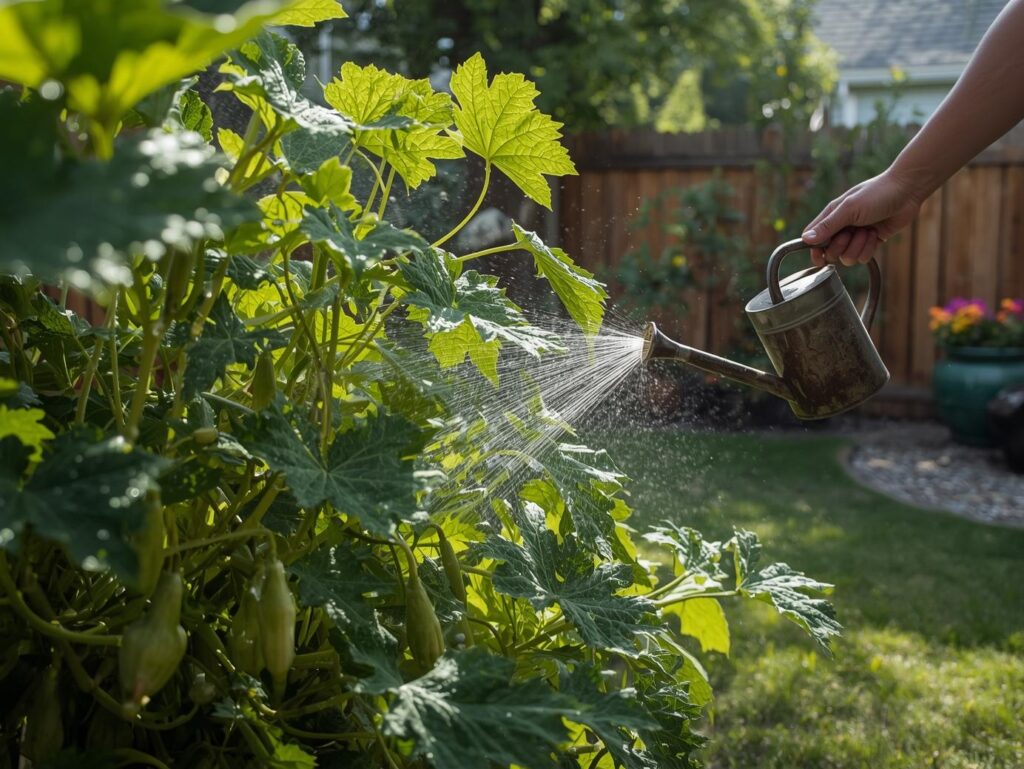
It’s best to water the plants early in the morning to allow excess moisture on leaves to evaporate during the day. Drip irrigation systems work well for courtyard gardens because they deliver water directly to the root zone, minimizing waste. Consistent watering ensures that the vines remain vigorous and the fruits develop evenly. Proper hydration contributes significantly to the yield and quality of ridge gourd harvests in home gardens across the USA.
Fertilizing
Ridge gourd is a nutrient-loving plant that benefits greatly from regular feeding. Before planting, mix compost or aged manure into the soil to provide a base supply of nutrients. Once the vines begin to spread, feed them every two to three weeks with a balanced organic fertilizer rich in phosphorus and potassium to encourage flowering and fruit formation. Avoid excessive nitrogen fertilizers, as they can promote leafy growth at the expense of fruit production.
For organic gardeners, compost tea or liquid seaweed extract works wonderfully to maintain soil health and boost productivity. During the flowering stage, an additional dose of potassium-rich fertilizer helps strengthen fruits and enhances flavor. A well-planned fertilizing routine supports continuous growth, resulting in a bountiful and healthy ridge gourd harvest from your courtyard garden.
Pruning and Training
Pruning and training are vital techniques for managing ridge gourd vines, especially in limited courtyard spaces. As the plant begins to climb, remove weak or unhealthy shoots to focus the plant’s energy on stronger vines. Pinching off the tips of main vines after they reach about six feet encourages the growth of side branches, which typically bear more flowers and fruits. Regular pruning keeps the plant open and allows better air circulation, reducing disease risk.
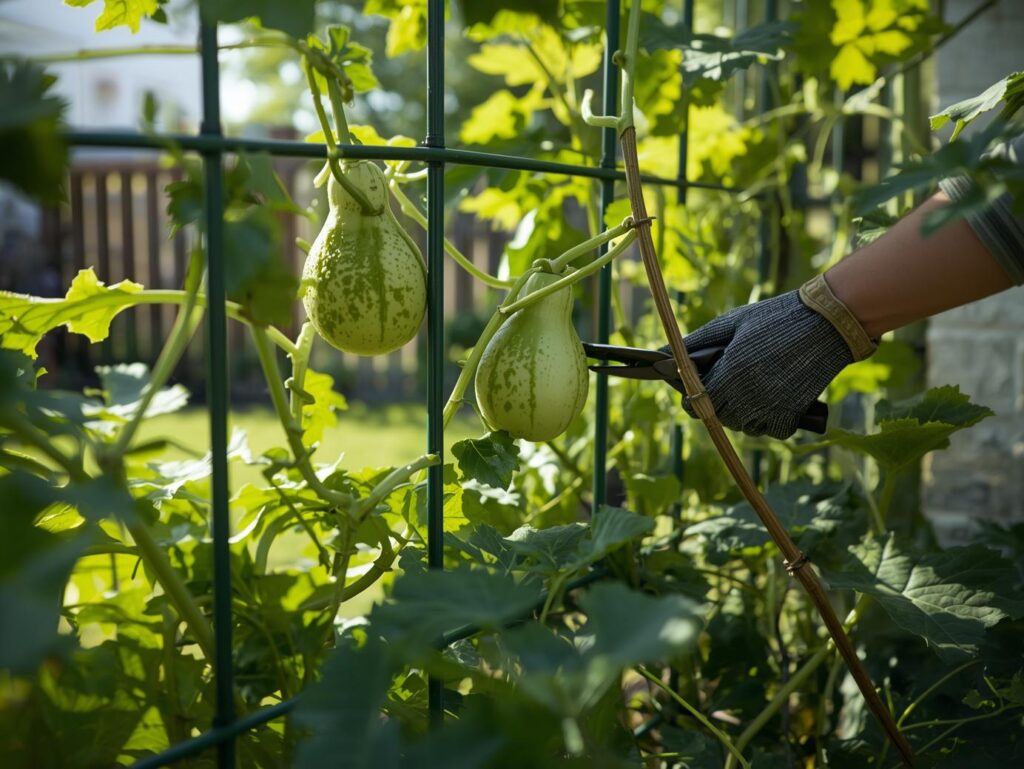
Training the vines along a trellis, arch, or pergola maximizes space and improves fruit quality. Vertical growth helps the gourds develop straight and clean, free from ground contact. It also makes harvesting easier and keeps your courtyard garden neat and organized. Proper pruning and training not only enhance the appearance of your home garden but also lead to a more productive and manageable crop.
Pest and Disease Control
Ridge gourd plants can face challenges from common garden pests like aphids, fruit flies, and whiteflies. Regular monitoring is essential to catch infestations early. Spraying a mild neem oil solution or using organic insecticidal soap can effectively manage these pests without harming beneficial insects. Introducing natural predators such as ladybugs also helps maintain ecological balance in your courtyard garden.
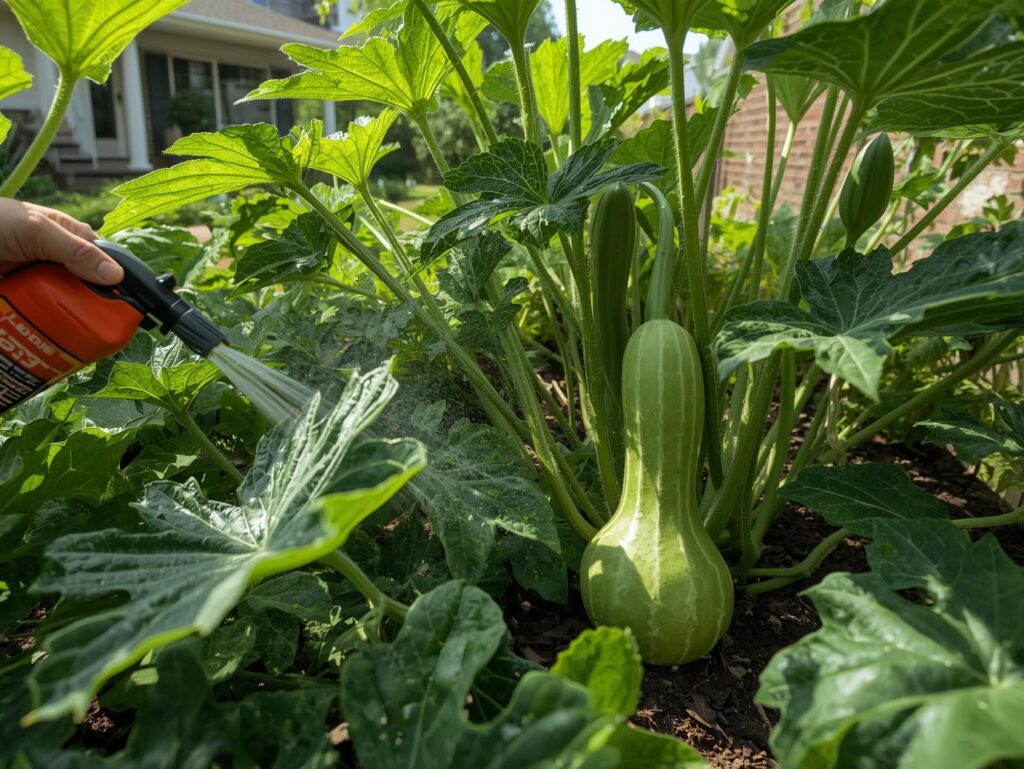
Fungal diseases such as powdery mildew and downy mildew may appear, especially in humid conditions. Ensure adequate spacing between plants and good air circulation to minimize these problems. Avoid overhead watering to keep foliage dry, and remove any infected leaves immediately. Practicing crop rotation and maintaining garden hygiene greatly reduces the risk of recurring diseases. A clean and well-monitored garden will keep your ridge gourd plants healthy and productive all season long.
Fruiting and Harvest
Ridge gourd plants start flowering about six to eight weeks after planting, followed by fruit development shortly after pollination. The fruits are ready for harvest when they are tender and still green, usually within 60 to 70 days. Mature fruits become fibrous and less palatable, so it’s best to harvest them early for optimal flavor and texture. Use a sharp knife or scissors to cut the gourds carefully without damaging the vines.
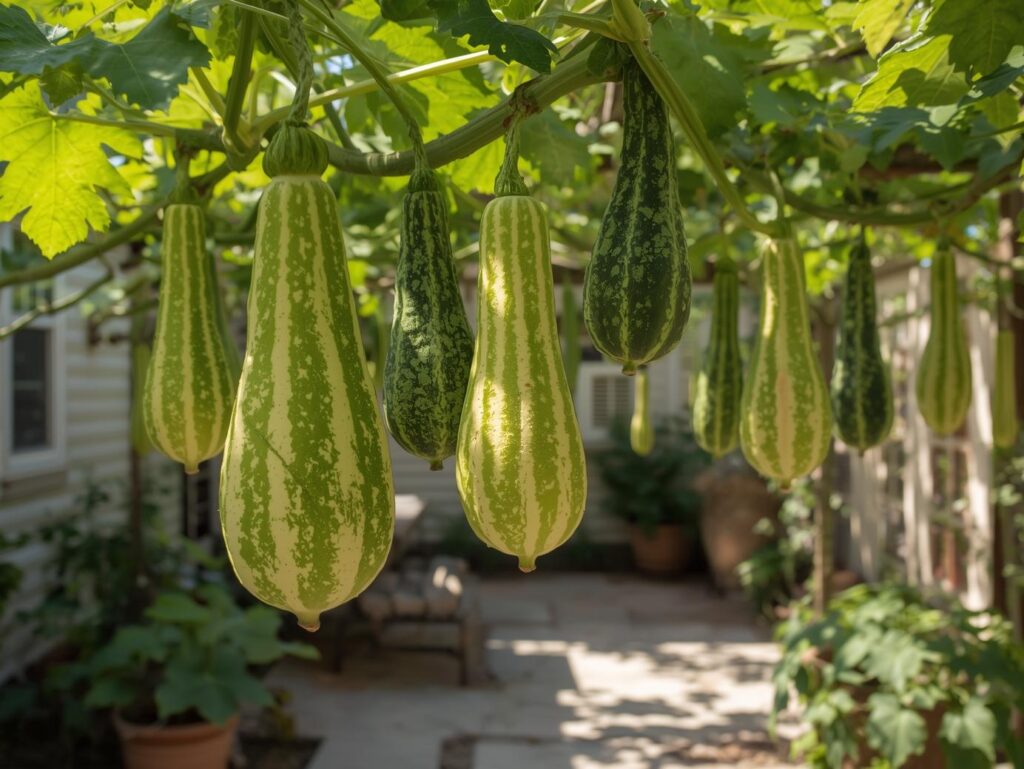
Regular harvesting encourages continuous fruit production throughout the growing season. In many U.S. regions, ridge gourd can be harvested every two to three days during peak season. Store freshly harvested gourds in a cool, dry place or refrigerate them to maintain freshness. Consistent harvesting not only improves yield but also keeps the vines productive until the end of the season. With attentive care, your courtyard can become a reliable source of fresh, homegrown ridge gourds.
